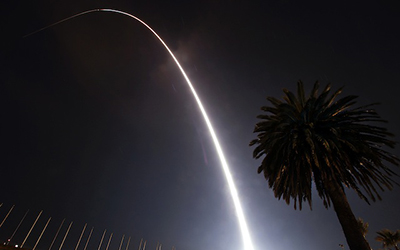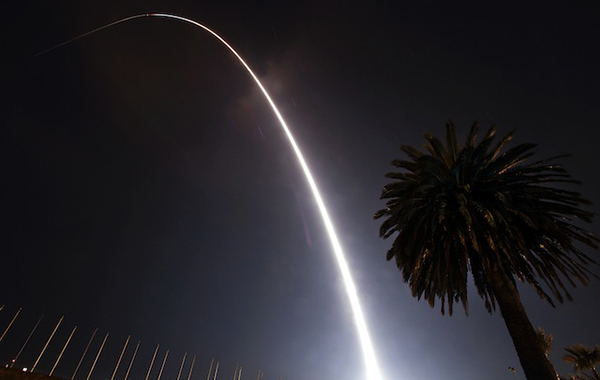100% pure space mission or motorway madness


Glorious Failure: The bad news is that the failed US$424 million Glory mission would have filled a yawning gap in the science regarding the effect of atmospheric aerosols—the second such environmental satellite mission failure in two years. The good news is that a more useful mission could be mounted for a fraction of the National Aeronautics and Space Administration price tag—US$100 million, if done by the private sector.
image B Walton | Santa Maria Times
It would cost about 7% of the planned Pūhoi–Wellsford motorway.
But rather than generate more greenhouse gases and trust to luck that its ministers will never have to face an international climate court, the government could fund an urgently needed and long overdue satellite mission to accurately aerosol climate forcings.
Dr James Hansen outlined the requirement for this pivotal mission ten years ago. Without it, humanity simply doesn’t know how dangerously it is living. Had the Glory mission not suffered a launch failure, in March this year, the gap in scientific knowledge regarding the part played by atmospheric aerosols would not be as great. A replacement mission is not due until 2015–2016.
Meantime, a what-the-doctor-ordered mission, featuring a Michelson interferometer, could be carried out by a private-sector space transportation company for about US$100 million, Dr Hansen is advised—to measure the largest cause of global warming, next to greenhouse gases:
It is remarkable and untenable that the second largest forcing that drives global climate change remains unmeasured.
In the global scheme of things, the US$100 million required is trivial. It could be raised by a number of methods, for example, by every Avaaz member kicking in US$10. Or at least by the time the campaign was underway, the group’s membership would have hit 10 million. Avaaz, in just four and half years, has become the largest global monitory democracy force.
But despite its massive numbers, the membership responds less than unanimously to the specific calls for action. Nevertheless, a well-supported campaign will typically attract half a million supporters:
Anna Hazare, a 73-year-old Gandhian activist, declared a fast unto death until the government agreed to let civil society draft a powerful new anti-corruption law. In just 36 hours, an unprecedented 500 000 Indians joined Avaaz’s campaign to support Hazare’s call for sweeping reform. In four days, the public outcry forced India’s government to sign a written submission to all of Hazare’s demands!
But while a well-supported Avaaz action can routinely notch up a million supporters globally, it would appear unlikely that anything like that number would accompany their vote with an online payment of US$100.
Launching a satellite named 100% Pure Aotearoa would be a spectacular and potent means of rehabilitating a badly tarnished brand—US$100 million is about what the New Zealand Tourism Board burns through each year. Alternatively, Fonterra could spare a third of its half-year after-tax profit of $293 million making amends for damage it did to the ‘100% pure’ brand by association with criminally melamine-laced Chinese infant milk powder. Had Pure Advantage been in business for three years, rather than a little less than three months, and its membership rate remained constant so that today’s 3073 subscribers had become 36 000, each member could have an equal share in the 100% Pure Aotearoa planet-saving satellite for just $3333.
Appropriately, Aotearoa’s strategic climate action focus is on agricultural greenhouse gases; the cost of launching Dr Hansen’s satellite should be borne by a state that is contributing more than its fair share of atmospheric aerosols. Though China hands down’s the biggest generator of pollution aerosols, the particles are wafted across the northern Pacific to the United States. Possibly self-interest will prevail and that bastion of citizens initiated action, California, will stump up for the launch. But given that Dr James Hansen is the director of the NASA Goddard Institute for Space Studies, it might be expected that National Aeronautics and Space Administration would honour the spirit of the words that once formed part of its mission statement:
to understand and protect our home planet
The need to better understand the Earth’s energy imbalance and its implications is clearly urgent. But there is already more than enough known to know that building more motorways for more cars and trucks is to recklessly disregard the further climate disruption that such energy inefficient transportation guarantees. For far less than the planned $1.65 billion Pūhoi–Wellsford motorway, Northland rail could be rebuilt and electrified, the spur line to Marsden Point could be built, and both could be complemented with Shweeb or trail…
…and the Hansen space mission could be launched.
